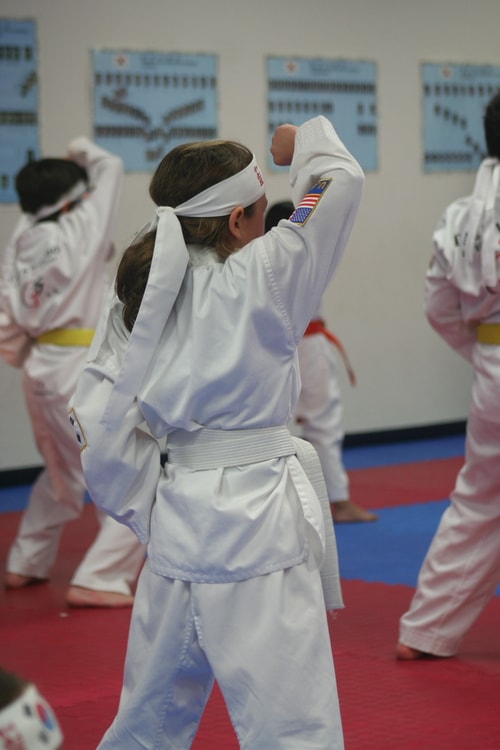There are many types of martial arts, and children can get many benefits from participation.
Kids can build their strength, balance and flexibility. They can also build confidence and self-esteem.
With several good things going for the martial arts, parents and families may still worry about potential risks.
Are certain injuries more common in the martial arts, and are there ways to reduce the risk of getting hurt?
Many of my answers are from a clinical report that I co-wrote for the American Academy of Pediatrics.
Martial Arts: Contact and Sparring are higher risk activities
All types of martial arts have basic movements, often called non-contact forms. These type of forms do not involve contact with other participants.
Each type also can have sparring or contact forms that involve actual combat or fighting between 2 individuals. Sparring can use particular techniques of blocking, kicking, striking, and takedowns. There can be sparring for practice and also in competitive matches.
As would be expected, sparring and contact forms have a higher injury risk. Children who want to move on to contact should first have a good grasp on non-contact movements and forms. Waiting until a child has shown both physical and emotional maturity with non-contact forms is also a good idea.
Not every martial arts participant needs to move on to sparring or competition. Many kids can get key benefits such as body control and balance without moving on to competition. These can lead to a lifetime of martial arts participation and also can develop athletic skills needed in other sports or activities.
To make sparring and competition safer, rules prohibiting excessive force, dangerous movements, or blows to forbidden areas need to be enforced. Pair up children not by age, but rather by experience and weight. Make certain instructors and officials show good understanding of rules and safety before signing up for sparring.
Martial Arts: Protect the head
Any activity that includes blows to the head or upper body is at higher risk for concussion or brain injury. The martial arts are no exception to this.
The best way to protect participants is to eliminate all deliberate impacts to the head. Points should be deducted, not awarded for head blows during competition.
How about using the soft headgear to reduce head injuries?
There is no evidence that soft headgear can limit concussions or other head injuries. No instructor, participant, family or official should trust soft headgear to reduce head injuries.
Martial Arts: Can those soft pads protects arms, legs, stomach and chest?
Pads may reduce skin damage and bruising, but again, there is not much evidence that they reduce more serious injuries like broken bones. With kicking such as in tae kwan do, there may be more benefit to kickers than those getting kicked.
Do not fully trust soft padding to reduce arm, leg, stomach or chest injuries. There is some evidence that teaching appropriate defensive blocking moves can reduce injury risk to these areas.
Martial Arts: What about Mixed Martial Arts (MMA) in children?
Mixed martial arts involve combinations of different martial arts. Competitive MMA has matches that can be won by forcing submission or knockout. Submission can include causing the opponent to become unconscious or tap out to risk further injury. Head or neck injuries are potentially more common due to submission movements.
With growing popularity of MMA in regular and social media, children copy risky moves that they see performed by adult fighters.
Given the high potential risk of head and neck injuries, be extremely cautious with any child or adolescent participation in MMA.


